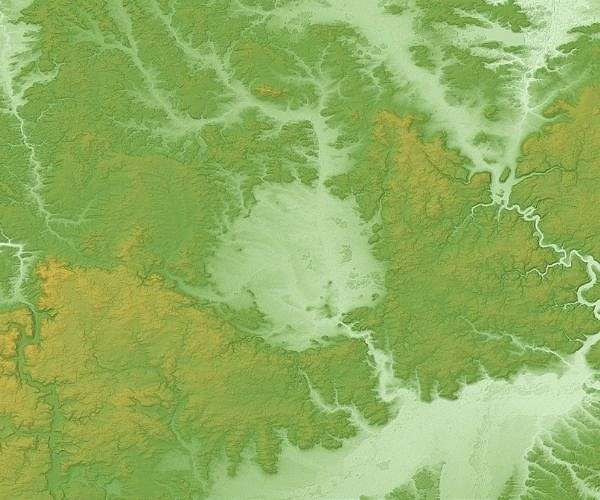8.12.2023

Nestled just north of the Danube in southern Germany, the Nordlinger Ries presents a striking geological feature: a large, circular depression surrounded by hills, created by an asteroid impact nearly 15 million years ago. This site has become a critical reference point for understanding similar craters on early Mars, particularly since NASA's exploration of Martian craters began in earnest.
Recent research, however, has cast new light on the limitations of crater lakes as climate archives. A team of international researchers, spearheaded by the University of Gottingen, conducted an in-depth analysis of dolomite rocks from a drill core in the area. Their findings revealed an unexpectedly high concentration of the carbon isotope C-13, traced back to a period of significant methane production by archaea, a type of microorganism, in waters with low sulphate levels.
Contrastingly, earlier sediments from the crater lake's initial phase showed evidence of high sulphate content and bacterial sulphate decomposition. This shift indicates a change in groundwater pathways to the lake as the crater floor cooled over time. These findings, published in the journal Geochimica et Cosmochimica Acta, provide a nuanced understanding of the chemical evolution of the former crater lake and its habitability.
The study utilized a 250-metre-long drill core, dating back to 1981, to uncover the chemical processes active during different sediment deposition phases in the crater lake. By combining sedimentological, biogeochemical, and isotope geochemical research methods, the researchers were able to pinpoint a distinct section for further investigation. Biomarker analyses revealed organic markers from sulphate-reducing bacteria in older rocks, and C-13 enriched dolomite along with archaeol, indicative of archaea, in younger rocks.
Professor Gernot Arp, the study's lead from the University of Gottingen's Department of Geobiology, explains that the chemical evolution observed is directly linked to changes in groundwater supply, transitioning from deep, hydrothermal groundwater rich in sulphate to cooler, sulphate-deficient water passing through limestone near the surface. This process was driven by the gradual cooling of the crater floor.
The research not only sheds light on the specific development of the Nordlinger Ries crater lake but also highlights the internal processes governing the conditions in asteroid crater lakes. Professor Arp emphasizes that while these findings are significant for understanding the Nordlinger Ries, they also caution against relying solely on crater lake deposits as climate archives. Internal factors like crater floor cooling and water supply play a more dominant role in these environments compared to climatic changes, a critical consideration for both terrestrial and extraterrestrial crater studies.
Quelle: SD
